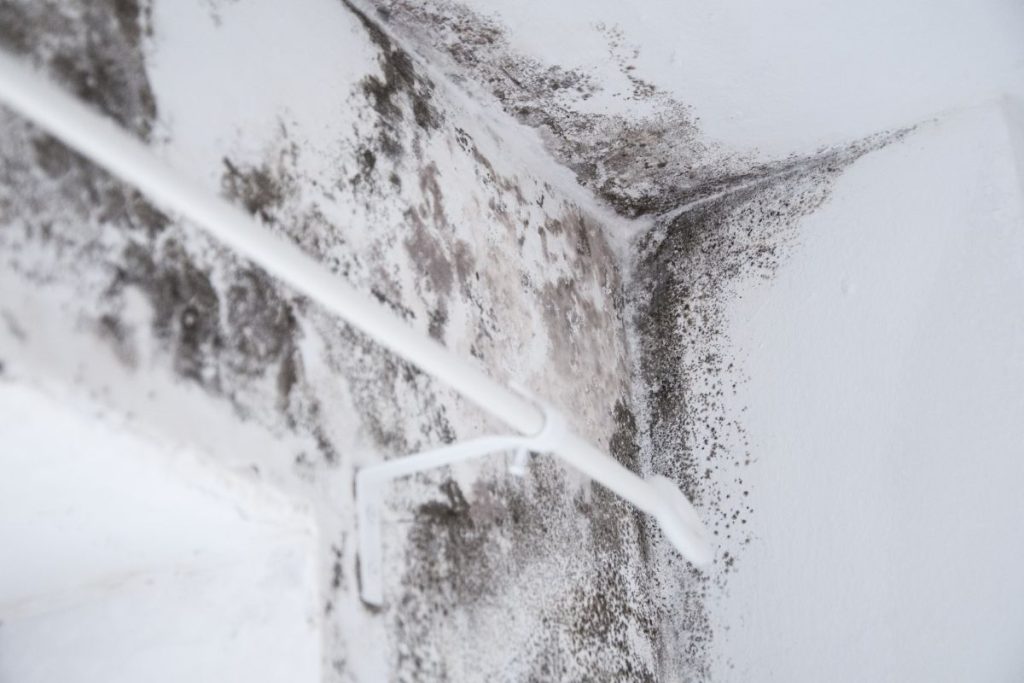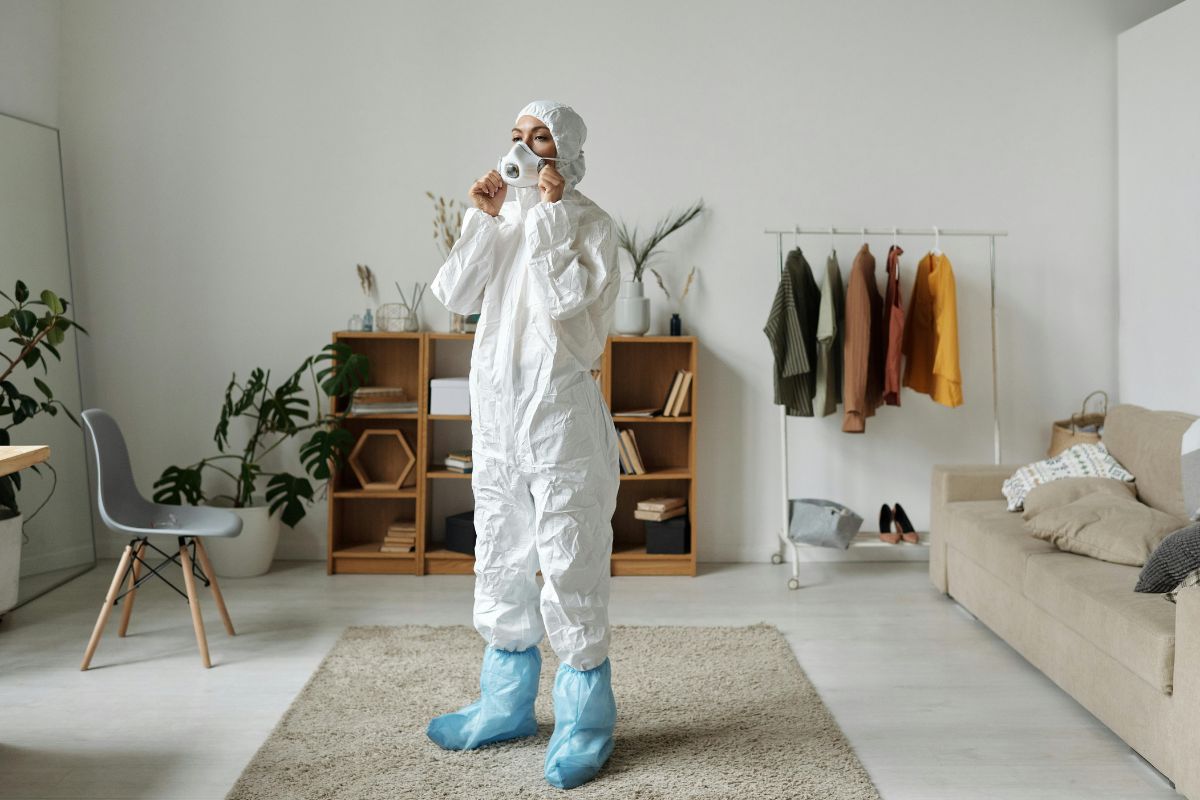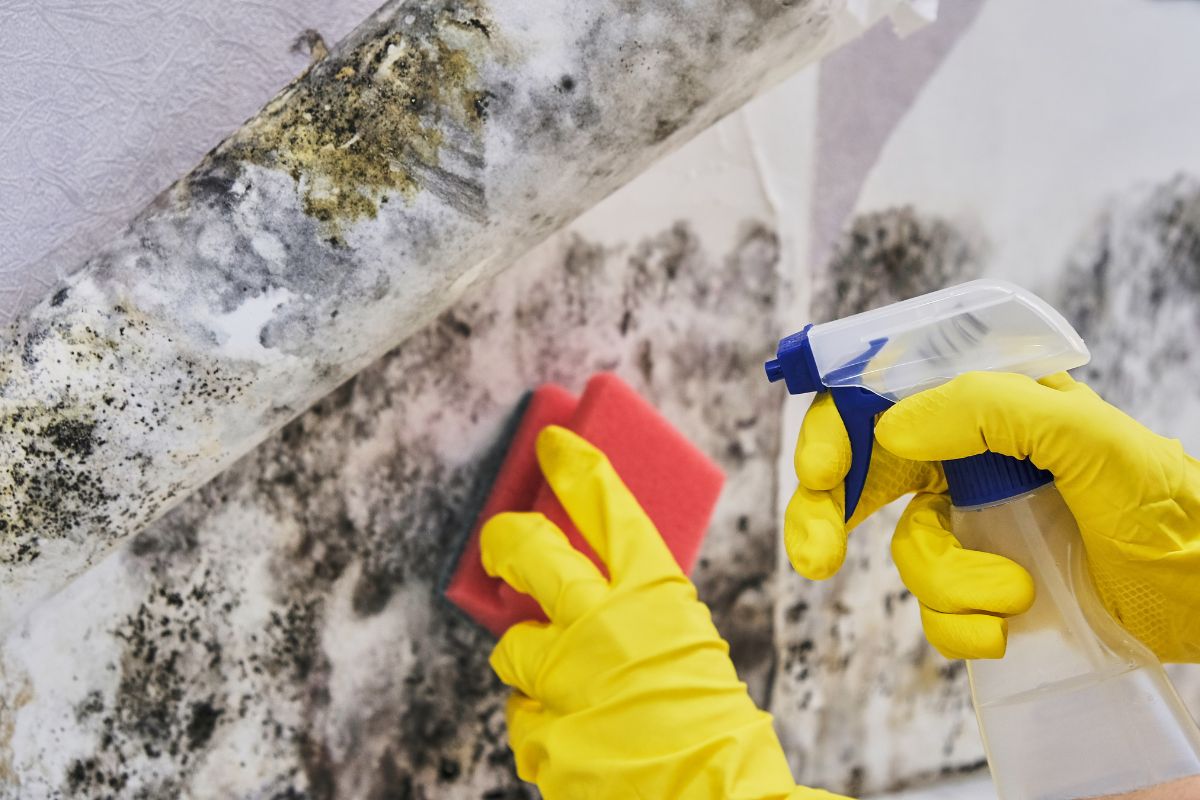
Black mold in your home can be frightening, but the good news is that you can often tackle it yourself, vinegar, hydrogen peroxide, and borax solutions. However, it’s crucial to understand when DIY methods are appropriate and when to call in the professionals. This comprehensive guide will walk you through identifying, treating, and preventing black mold, ensuring a safer and healthier home.
Black Mold: Understanding the Threat
Black mold, often referred to as Stachybotrys chartarum, is a type of fungus that thrives in damp, humid environments. It’s recognizable by its dark greenish-black color and musty odor. While not all black-colored molds are Stachybotrys, any suspected mold growth should be addressed promptly. The dangers of black mold exposure range from allergic reactions and respiratory issues to more severe health complications, particularly for individuals with compromised immune systems, children, and the elderly. Addressing mold growth quickly is paramount to ensure your family’s well-being and the structural integrity of your home.
Is it REALLY Black Mold? Identifying the Culprit
While the term “black mold” strikes fear, it’s important to accurately identify the mold type before taking action. Black mold is often a dark greenish-black color, but other molds can also appear black.
- Visual Identification Tips: Look for a slimy or fuzzy texture. Pay attention to the location – is it in a damp area like a bathroom, basement, or near a leaky pipe?
- When to Call a Professional for Testing: If you’re unsure or if you’re experiencing health symptoms, professional mold testing is recommended. A qualified expert can accurately identify the type of Black mold and assess the extent of the problem.
Safety Precautions Before You Start

Before you even think about spraying anything, safety is paramount! Mold spores can become airborne during the cleaning process, posing a health risk.
- Protective Gear Needed: Always wear a NIOSH-approved respirator mask (N95 or higher), gloves (non-porous), and eye protection (goggles).
- Ventilation is Key: Open windows and doors to ensure proper ventilation. Use a fan to help circulate air.
- Protecting Your Home: Seal off the affected area with plastic sheeting and tape to prevent spores from spreading to other parts of you advice or house.
Have questions or need mold expert removal? Contact us today for professional assistance!
Effective Sprays for Killing Black Mold: DIY Solutions
Now that you’re protected, let’s explore some effective DIY sprays:
- Bleach Solution (Pros & Cons): Mix one part bleach with ten parts water. Bleach is effective at killing surface mold but doesn’t penetrate porous materials. Use with caution and never mix with ammonia.
- Vinegar (The Natural Choice): White distilled vinegar is a natural acid that kills about 82% of mold species. Simply spray undiluted vinegar on the affected area and let it sit for an hour before wiping clean.
- Hydrogen Peroxide: A 3% hydrogen peroxide solution is effective against mold. Spray it on, let it sit for 10-15 minutes, and then scrub.
- Borax Solution: Mix one cup of borax with one gallon of water. Borax is a natural mineral that inhibits mold growth.
- Tea Tree Oil: A natural fungicide. Mix 1 teaspoon with 1 cup of water, spray, and don’t rinse. It has a strong scent.
The Right Way to Apply Mold-Killing Sprays: Step-by-Step Guide

Follow these steps for effective mold removal:
- Preparation is Key: Remove any loose debris or visible mold growth with a brush or vacuum (using a HEPA filter).
- Application Techniques: Spray the affected area thoroughly, ensuring the surface is saturated.
- Scrubbing and Cleaning: After the spray has sat for the recommended time, scrub the area with a brush or sponge.
- Drying and Ventilation: Thoroughly dry the area with a clean cloth or fan. Ensure continued ventilation to prevent moisture buildup.
When DIY Isn’t Enough: Knowing When to Call a Professional
While DIY solutions can be effective for small, surface-level mold issues, certain situations require professional intervention:
- Large Infestations: Mold covering more than 10 square feet.
- Persistent Mold Growth: Mold that keeps returning after cleaning.
- Health Concerns: If you or your family members are experiencing health problems related to mold exposure.
- Hidden Mold: Mold behind walls, under floors, or in HVAC systems.
- HVAC Mold: Mold growing inside your heating, ventilation, and air conditioning (HVAC) system.
Need help tackling black mold? Call us today for expert guidance!
Preventing Black Mold: Long-Term Solutions
Prevention is always better than cure! Here are some key steps to prevent mold growth:
- Controlling Humidity: Use a dehumidifier in damp areas like basements and bathrooms. Keep humidity levels below 50%.
- Proper Ventilation: Ensure adequate ventilation in bathrooms and kitchens by using exhaust fans.
- Fixing Leaks Promptly: Address any water leaks immediately, no matter how small. Leaky pipes and roofs are breeding grounds for mold.
- Regular Inspections: Regularly inspect your home for signs of water damage or mold growth.
- Use Mold Resistant Paint: Consider using mold-resistant paint in areas prone to moisture.
Common Misconceptions About Black Mold
It’s important to separate fact from fiction when it comes to black mold:
- All Black Mold is Deadly: While Stachybotrys chartarum can be toxic, not all black-colored molds are this species. Accurate identification is crucial.
- You Can Just Paint Over Mold: Painting over mold is a temporary fix that won’t solve the underlying problem. The mold will continue to grow underneath the paint.
- Bleach Always Kills Mold: Bleach is effective on non-porous surfaces, but it doesn’t penetrate porous materials and may only bleach the surface without killing the roots.
Taking Control of Black Mold in Your Home
Dealing with black mold can be overwhelming, but by understanding the risks, taking proper safety precautions, and utilizing effective cleaning methods, you can take control of the situation. Remember, if you’re dealing with a large infestation, recurring mold, or health concerns, don’t hesitate to call a professional mold remediation company. Prioritize your health and the safety of your home.
Concerned about black mold? Call us today for expert advice and effective solutions!
